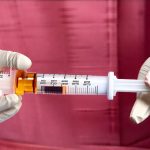Experiencing nausea after exercise is surprisingly common, yet it often leaves people questioning whether it’s simply a transient effect of pushing their limits or an indication of something more serious. The spectrum ranges from mild discomfort easily shaken off to debilitating sickness that halts training altogether. Understanding why this happens, and crucially, when it warrants further investigation, is vital for maintaining both physical well-being and the enjoyment of exercise. Many factors are at play – intensity level, hydration status, individual physiology, even what you’ve eaten beforehand – all contribute to whether post-exercise nausea is a fleeting inconvenience or a cause for concern.
This article aims to unpack this complex issue, providing a comprehensive overview of the potential causes of nausea after exercise, differentiating between normal responses and warning signs that require medical attention. We’ll explore the physiological mechanisms at work during exertion, the role of different types of exercise, and practical strategies for minimizing discomfort. It’s important to remember that everyone responds differently; what’s perfectly normal for one person may indicate a problem for another. Therefore, listening to your body and knowing when to seek professional guidance is paramount.
Understanding the Physiological Mechanisms
Nausea after exercise isn’t usually a simple case of ‘something being wrong’. It often stems from the body’s natural responses to strenuous physical activity. During exercise, blood flow is redirected away from the digestive system towards working muscles. This shunting prioritizes oxygen and nutrient delivery where it’s needed most, but simultaneously reduces blood supply to the gut – potentially slowing down digestion and increasing susceptibility to discomfort. The vagus nerve, a crucial component of the parasympathetic nervous system, plays a significant role; its activation can sometimes be overstimulated during intense exertion, triggering nausea as a protective mechanism.
Furthermore, lactate buildup – a byproduct of anaerobic metabolism (energy production without sufficient oxygen) – has been historically blamed for post-exercise nausea. However, recent research suggests this isn’t the primary driver in most cases. Instead, hormonal changes and fluid shifts are more likely culprits. Intense exercise triggers the release of stress hormones like cortisol and adrenaline, which can disrupt gastrointestinal function. Simultaneously, significant fluid loss through sweat alters blood volume and electrolyte balance, further contributing to feelings of nausea.
Finally, the type of exercise matters considerably. High-impact activities like running or jumping are more likely to induce nausea compared to lower-impact exercises like swimming or cycling. This is partially due to the increased jostling and movement within the abdominal cavity during high-impact activities, which can exacerbate gastrointestinal distress. The rapid changes in blood pressure associated with start-stop movements also play a part; these fluctuations can disrupt the delicate balance needed for comfortable digestion. If you suspect your gas might be related, consider reading how to tell if it signals a condition.
Differentiating Normal from Concerning Nausea
It’s crucial to distinguish between nausea that’s expected and manageable after strenuous exercise, and nausea that signals an underlying health issue. Mild nausea, particularly following high-intensity workouts or prolonged exertion, is often a normal physiological response. This type of nausea typically subsides within 30-60 minutes with rest and rehydration. It’s usually accompanied by other expected symptoms like fatigue, muscle soreness, and increased heart rate. The key here is the absence of additional concerning signs.
However, several characteristics suggest that post-exercise nausea may warrant medical attention. Persistent nausea lasting longer than an hour, or recurring after multiple workouts, should be investigated. Nausea accompanied by vomiting (especially if it contains blood), dizziness, severe headache, chest pain, shortness of breath, or confusion is a red flag and requires immediate medical evaluation. These symptoms could indicate more serious conditions such as dehydration, electrolyte imbalance, cardiac issues, or even exertional heatstroke. Do not attempt to self-diagnose; seek professional help. Pay attention to the context – did the nausea appear suddenly during exercise, or gradually after? This information is valuable for healthcare professionals. If you are unsure is acid reflux a sign of something else?
Hydration and Electrolyte Imbalance
Maintaining adequate hydration before, during, and after exercise is paramount in preventing nausea. Dehydration reduces blood volume, making it harder for the body to regulate temperature and deliver oxygen efficiently. This can lead to a cascade of effects that ultimately trigger nausea. Electrolyte imbalances – particularly sodium, potassium, and magnesium – also play a crucial role. These electrolytes are lost through sweat and are essential for proper nerve and muscle function.
Here’s how to proactively address hydration and electrolyte balance:
- Pre-hydrate: Drink approximately 16-20 ounces of water 2-3 hours before exercise, and another 8-12 ounces 30 minutes prior.
- Hydrate during: Consume fluids regularly throughout your workout – about 4-8 ounces every 15-20 minutes, depending on the intensity and duration. Consider electrolyte drinks for longer or more intense sessions.
- Rehydrate post-exercise: Replenish lost fluids and electrolytes after exercise with water, sports drinks, or a balanced meal containing sodium and potassium.
Exercise Intensity and Pacing
The intensity of your workout is directly correlated to the likelihood of experiencing nausea. Pushing yourself too hard, too soon, can overwhelm your body’s physiological capacity, leading to gastrointestinal distress. Sudden increases in exercise intensity – for example, attempting a significantly longer run or heavier lift without proper preparation – are particularly problematic.
Effective pacing is key. Gradually increase the duration and/or intensity of your workouts over time, allowing your body to adapt. Incorporate rest periods during high-intensity intervals. Listen to your body’s signals; if you begin to feel nauseous, slow down or stop altogether. Progressive overload – gradually increasing stress on the body – is a safe and effective way to improve fitness without triggering unwanted side effects. Don’t compare yourself to others; everyone has different limits. If constipation seems related to diet, is constipation a sign of food intolerance?
Dietary Considerations Before and After Exercise
What you eat before and after exercise can significantly impact your susceptibility to nausea. Heavy, fatty meals take longer to digest and can put extra strain on the digestive system during exertion. Avoid these types of foods in the hours leading up to a workout. Instead, opt for easily digestible carbohydrates like fruits, toast, or oatmeal.
After exercise, prioritize replenishing glycogen stores (energy reserves) with a combination of carbohydrates and protein. However, avoid consuming large amounts of sugary drinks or processed foods immediately after a workout; these can cause rapid blood sugar spikes and potentially exacerbate nausea. Small, frequent meals are generally better tolerated than large ones. Consider the timing – allow sufficient time for digestion before engaging in strenuous activity. Experiment to find what works best for your body. Sometimes even loose stools can be a factor after eating.
It’s important to note that this information is not a substitute for professional medical advice. If you’re consistently experiencing nausea after exercise, or if it’s accompanied by any concerning symptoms, consult with a healthcare provider to rule out underlying health conditions and receive personalized guidance. If diagnosed, follow-up testing can be very useful. Don’t forget about follow-up tools too!


















